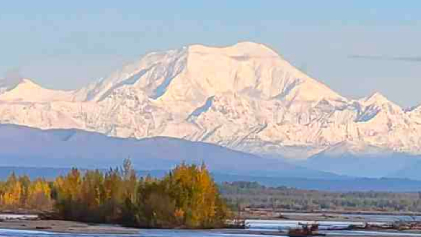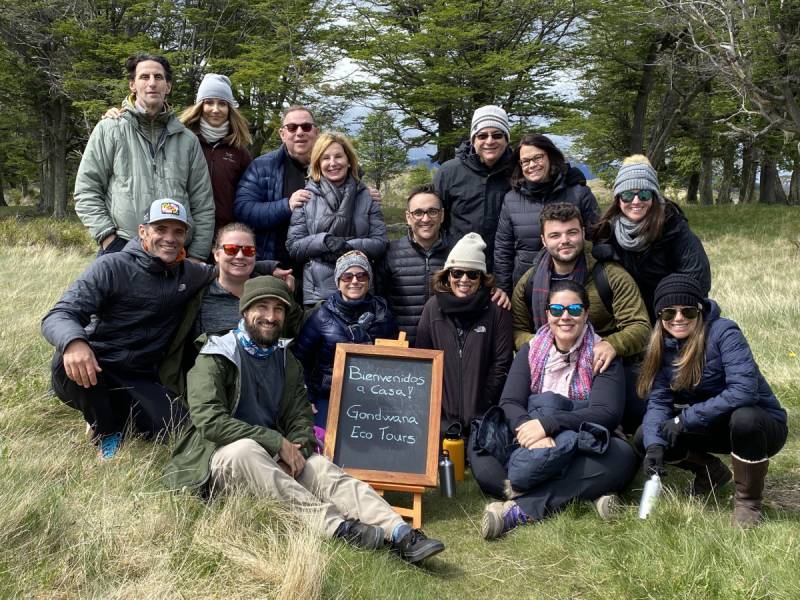Alaska Grizzlies Of The Kenai Peninsula
Download Travel Details >PRIVATE & SMALL GROUP TOURS TO THE WORLD'S BEST DESTINATIONS
Three Amazing Alaskan Vacations To Choose From!

Bear Watching Adventures On The Kenai Peninsula
The Kenai Peninsula is an easy drive south from Anchorage, with stunning views of the Turnagain Arm and the Chugach Mountains. This rugged peninsula is 200 miles long and 100 miles wide and is home to a very special population of Alaska grizzlies. These brown bears are called Kenai Peninsula brown bears.
Kenai Peninsula brown bears are a unique and isolated population of Alaska bears, with fewer than 600 of their species remaining on the peninsula today. Although the Kenai Peninsula isn’t an island, the narrow Kenai isthmus creates a bottleneck that proves extremely difficult for large mammals, like brown bears, to cross. The result is a population of Alaska grizzlies living on the peninsula, but acting like they are stranded on an island!
Kenai Peninsula Bears: Fact Or Fiction?
The Kenai Peninsula has some of the best freshwater fishing in the state, which allows tourists (and locals) to enjoy some of the best angling around. But it also allows Alaska grizzlies to eat their fair share of the catch. Like other coastal brown bears in Alaska, the Kenai Peninsula brown bear inhabits an ecosystem that provides it with plentiful food. Here are some other fun facts about this unique Alaska bear:
- Brown Bears, or grizzly bears, can be found throughout most of the Kenai Peninsula.
- Access to the Kenai Peninsula’s abundant food resources means that these bears can exceed 1,000 pounds. That’s a big bear!
- Kenai Peninsula brown bears are omnivorous and will eat almost anything edible they find or catch. In the spring, grasses are usually the first food to sustain them, but they will eat moose or other ungulates when the opportunity presents itself. They also catch and eat salmon once the annual salmon runs begin.
- Biologists have estimated that there are only 600 Brown Bears currently living on the Kenai Peninsula. The bears are considered endangered.
- While the Alaska Bears on the Kenai Peninsula are not genetically distinct from their mainland counterparts, researchers think that the population may be isolated from the mainland and have not interacted with the rest of the state’s bear population.
Planning Your Bear-Watching Trip To The Kenai Peninsula
Located just 40 minutes from Anchorage, the Kenai Peninsula is a mecca for outdoor enthusiasts from all over the world. Traffic flows daily from Anchorage along the Seward Highway, taking people to various places of interest all over the Kenai Peninsula. One of the top items of interest for tourists is bear watching on the Kenai Peninsula. To learn more about planning a bear-viewing excursion for yourself, keep reading!
Kenai Peninsula Bear Watching 101
If you need a basecamp for bear-watching on the Kenai Peninsula, Seward is the town for you. Located on Resurrection Bay, a fjord of the Gulf of Alaska on the Kenai Peninsula, Seward is situated on Alaska's southern coast and offers easy access to Kenai’s bear-watching hot spots.
- Russian River Falls - The Kenai Peninsula brown bear is a majestic symbol of the North American wilderness and Alaska, respected for its power, intelligence, and beauty. To see these bears in their native habitat, it’s best to follow the fish! During late June, pools within the falls on the Russian River swarm with thousands of green-headed, red-bodied sockeye salmon. From two decks on the riverside cliffs, you can watch the salmon attempt to leap the falls to reach spawning grounds upstream. This activity brings Alaska grizzlies to the Russian River, where they scoop salmon from the water. The falls are accessible to visitors by a two-mile trail that is wheelchair accessible. Along the pathway, you can listen to native birds and search for a glimpse of a moose in the surrounding forest. To get to the falls, simply follow the Seward Highway to mile marker 52. Enjoy watching Alaska grizzlies from the falls’ viewing platform, along with Harlequin ducks, spruce grouse, hairy woodpeckers, American dippers, and Bohemian waxwings.
- Kenia National Wildlife Refuge – the Kenai National Wildlife Refuge makes up a long, broad swath of the western Kenai Peninsula, stretching across 2 million acres. The refuge encompasses the western slopes of the Kenai Mountains, forested lowlands along Cook Inlet, rivers, wetlands, and chains of lakes. Dall sheep, caribou, wolverine, moose, wolves, black and brown bears, and lynx call this refuge home. The Kenai River runs through the refuge, with its population of King Salmon. Alaska bears are drawn to the river during the salmon runs, in search of the food that will sustain them through a winter’s hibernation. The refuge’s visitor center provides displays about animals and habitats, plus brochures, maps, and other information. To reach the refuge, drive the Seward Highway to mile marker 96.1.
- Kenia Fjords National Park – the most popular place in the park to spot Alaska grizzlies is the Harding Icefield Trail. The 8.2-mile round-trip hike departs from the Exit Glacier area, which allows hikers to see this amazing glacier, as well as spot the park’s wildlife. Black bears are spotted almost daily along the trail, where they feed on salmonberries and other dense vegetation. Sharp-eyed tourists can also spot Hoary Marmot, a large rodent that lives in the grassy areas along the trail.
Expand Your Bear-Watching Experience With A Trip To Lake Clark
While there are many opportunities for bear-watching on the Kenai Peninsula, they are not the only option for you to see Alaska bears during your trip to the Last Frontier! If you want a truly spectacular bear-viewing experience, you can take a floatplane from the Kenai Peninsula to one of the popular bear-viewing locations at Lake Clark National Park. Enjoy the sight of Alaska grizzlies feasting on fish during the annual salmon runs and enjoy the pristine beauty of one of Alaska’s famous national parks!
- Wolverine Creek – located on the west side of Cook Inlet, Wolverine Creek has become a popular bear-viewing destination. The experience is boat-based and the area can be crowded during peak season from mid-June to mid-July. Brown bears are abundant at Wolverine Creek during mid-to-late summer when the salmon are returning to spawn. Black bears are also abundant, but usually remain farther inland, in the mountains and foothills. Birding enthusiasts are especially fond of this destination, as it is an important waterfowl nesting area for ducks, geese, swans, and other birds.
- Crescent Lake – this location, in the heart of the Chigmit Mountains, offers visitors outstanding bear-viewing opportunities. Sockeye and silver salmon run up the Crescent River each summer, attracting both brown and black bears up the shoreline in search of their next meal. Visitors can also enjoy the sight of the spectacular Redoubt volcano in the distance, and the beautiful glacial-fed waters of the lake, which are a stunning turquoise-green hue.
Awesome Bear Watching Adventures In Kenai And Beyond
The Kenai Peninsula is a truly spectacular place for outdoor activities, including its amazing bear-watching opportunities. If seeing Alaska bears is on your vacation bucket list, this stunning Peninsula needs to be a destination on your “to visit” list. From Alaska grizzlies to black bears, bear watching on the Kenai Peninsula has it all.


